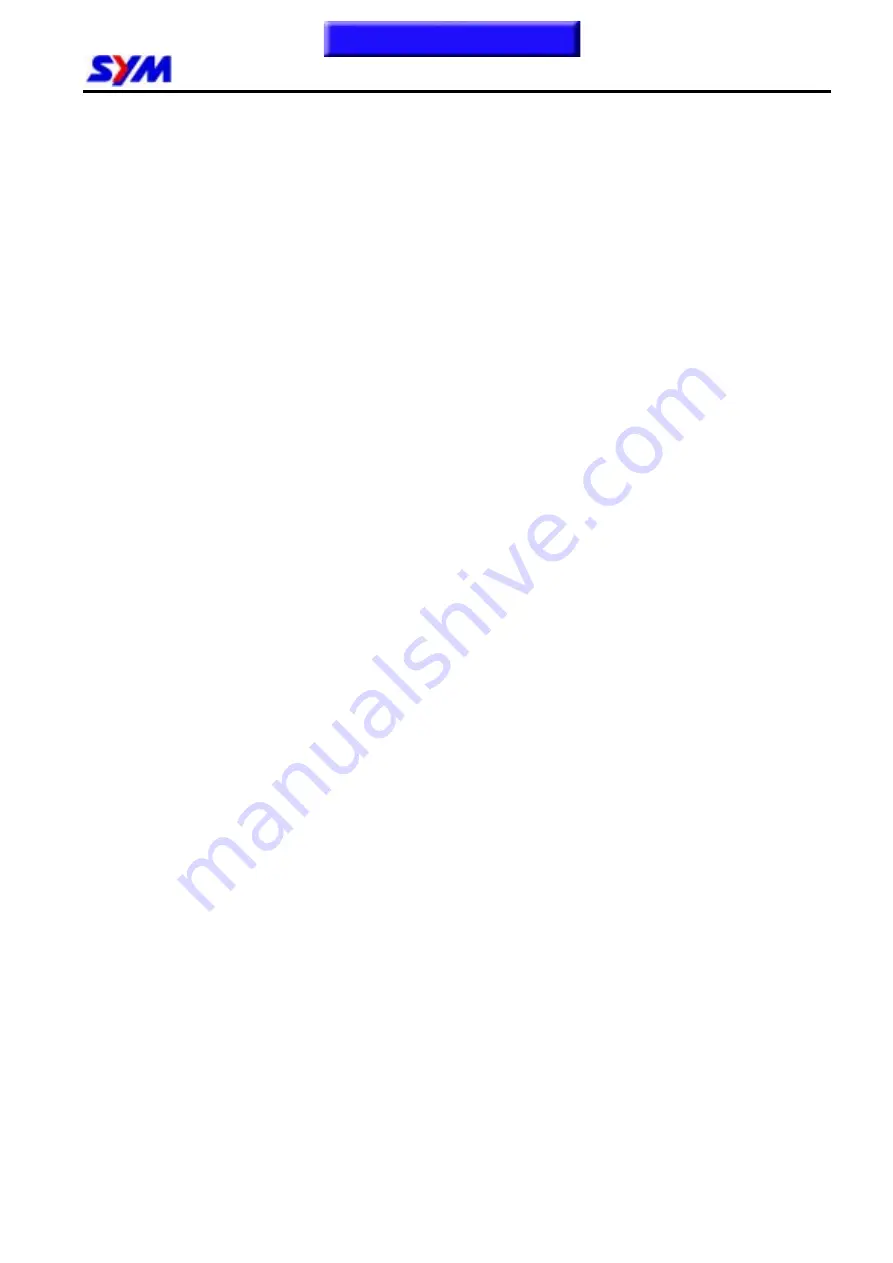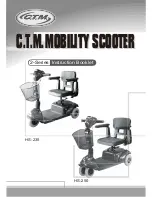
4. FUEL INJECTION SYSTEM
4-3
Introduction Of Fuel Control System
The engine of this model was based on a 150 c.c. four-stroke & 4-valve SOHC electronic controlled
single cylinder, air-cooler, engine. It adopts a charcoal canister to absorb the fuel vapor generated
through evaporation in the fuel system & crankcase. Then, introducing evapor into combustion
chamber.
Electronic Fuel Injection Device:
This device consists of both the fuel supply system ---fuel tank, electrical fuel pump, fuel filter, and
fuel pump regulator as well and the fuel control system---fuel injector and ECU.
Fuel is delivered to the fuel injector onto the intake manifold through fuel tank to fuel pump. Fuel
pressure is kept within 2.5bar by means of the fuel regulator. Then, the injection signal from ECU is
to let fuel inject to cylinder in every crankshaft rotation. In addition, the residual fuel is back to fuel
tank by the fuel regulator. The fuel pump is stalled into the fuel tank so that can reduce noise and
simplify the fuel pipe routing. The electronic controlled ignition & injection system can control fuel
consumption & emission efficiently so that reaches to the purpose of environmental purification.
Fuel delivery way in most of motorcycle’s engines is by carburetor. The absorption capacity of engine
is to create vacuum inside of the carburetor so that fuel is suck into combustion chamber with air.
Therefore, under such operation, air & fuel mixture ratio is decided by flowing air and fuel absorbed
quantity. Thus, the 3 factors, air detective quantity, fuel quantity decision and fuel absorbed quantity,
are conducted inside of the carburetor.
However, as for the fuel injection system, it detects air absorbed quantity and temperature. Thus, the
fuel supply quantity is decided by the default preset in the system computer. Then, fuel is injected out
by the fuel injector. Comparing with carburetor engine, the 3 factors are independent, and can
increase their precision easily so that fuel supply can be much more accurate.
The engine is equipped with a fuel injection of computerized control and its main characters are as
following:
1. The necessary fuel injection quantity is decided by correspondence with engine rotation. And, the
engine also is applied with a good reaction and high accurate throttle valve. (So, fuel injection
quantity and timing are decided by engine RPM and the throttle valve opening.)
2. The decision of fuel injection quantity and injection timing are controlled by a 8-bite highly
accurate micro-computer.
3. The pressure regulator is always to keep the variances of intake manifold and fuel pressures in a
constant value (2.5bar). So, with the change of intake manifold pressure, the fuel injection quantity
can be kept in proper level.
4. The engine can measure the manifold pressure to enrich fuel injection based on high position
level so that enhance driving capacity.
5. The idle speed control system is to provide manifold with the 2
nd
air to increase idle speed’s
stability and starting capacity.
Electronical Fuel Injection Components & Operation Principle Introduction
The electronic fuel injection components is consists of
both the fuel supply system ---fuel tank,
electrical fuel pump, fuel filter, and fuel pump regulator as well and the fuel control system---fuel
injector and ECU.
Fuel is delivered to the fuel injector onto the intake manifold through fuel tank to fuel pump. Fuel
pressure is kept within 2.5bar by means of the fuel regulator. Then, the injection signal from ECU is
to let fuel inject to cylinder in every crankshaft rotation (i.e. the fuel supply system is to inject fuel to
cylinder one time. In addition, the residual fuel is back to fuel tank by the fuel regulator through the
fuel return pipe. In order to reduce noise and simplify the fuel pipe routing the fuel pump usually is
designed to install into the fuel tank.
Generally speaking, the electronic controlled ignition & fuel injection system can control fuel
consumption & emission efficiently so that reaches to the purpose of environmental purification.
















































